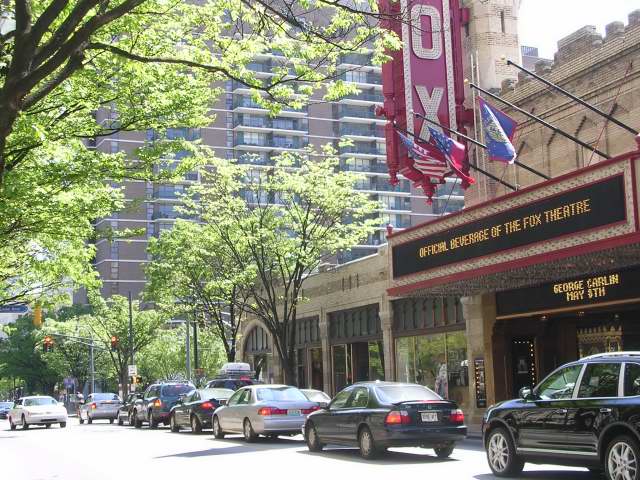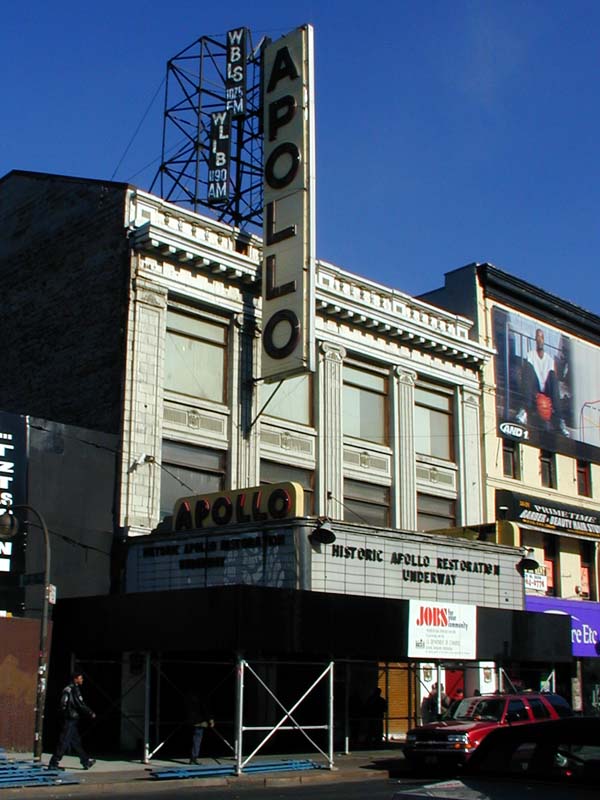Monday, January 28, 2008
Monday, January 14, 2008
Friday, December 28, 2007
Historic illustration: 1992's Tropic Hunt.

Image from the Tropic Hunt Archives
Miracle Theater on the Web
 The Miracle Theater is listed in Cinema Treasures. In addition to a synopsis of the history of the theater, the site provides a forum for people to post their thoughts and recollections of the theater:
The Miracle Theater is listed in Cinema Treasures. In addition to a synopsis of the history of the theater, the site provides a forum for people to post their thoughts and recollections of the theater:"The Miracle during the early '70s was a great house. The TV in the lobby was always tuned to WTVJ-4 (also a Wometco property), and the A/C was strong. I saw The Way We Were multiple times in its original run at the Miracle, even taking a date once to sit on the lip of the balcony to make out. The Miracle capped off the tony feel of the Mile during those years. After a movie we'd go to The Scandinavians (a gift shop way ahead of its time for Miami), and then Jahn's for ice cream."
posted by Lewis Day on Sep 1, 2004 at 7:49am
They also have a list of the other theaters designed by W.H. Lee. Most have been closed, and many demolished, but quite a few are still standing. The Landis Theater, in Vineland NJ, is currently being renovated.
Miracle Theater in the Coconut Grove
Tuesday, December 11, 2007
Marquee Renovation: Fox Theater
In most cases, clicking on the picture will show you a larger view of the image.
The historic Fox Theater is a landmark building located in Atlanta, Georgia. Its renovation is widely lauded, but it appears that their marquee has undergone a greater change than the current proposal for the Miracle Theater Marquee.
From WikiPedia:
Originally intended as the Yaarab Temple Shrine Mosque, a headquarters for a 5000-member Shriners organization, the $2.75 million project was completed only with funding and a twenty-one year lease by movie mogul William Fox, who was building theatres around the country at the time. The theatre opened on December 25, 1929, just two months after the stock market crash.
During the 1960s several elements collided to bring about the Fox’s decline; white flight, television, and changes in how films were distributed. By the 1970s the Fox could only show second-run movies to an ever dwindling audience.
After the Fox was saved from the demolition, a lengthy and expensive restoration process began. Luckily much of the original décor had survived and new pieces were created with the help of old photographs. Today, the Fox appearance looks much like it did when it opened, with some additions that were in the original plans but scrapped in the 1920’s because of financial constraints, and other changes that had to be made to bring the building up to current safety codes.
 This 1956 photo shows that the Fox had a Wagner Slotted letter system. A banner has been hung UNDER the marquee to provide more information about the current show, and
This 1956 photo shows that the Fox had a Wagner Slotted letter system. A banner has been hung UNDER the marquee to provide more information about the current show, andpresumably some color.

The Fox Theater's Marquee front has replaced the Slotted system with a chasing matrix light display. A second tier of signage echoes the banner seen in the 1956 shot.
 A closer shot of the old marquee during a 1975 protest shows the Wagner Slotted system on the end of the marquee.
A closer shot of the old marquee during a 1975 protest shows the Wagner Slotted system on the end of the marquee.- Fox Theatre website
- The Fox as Historic Landmark
- History of the Fox (entry in the New Georgia Encyclopedia)
- Then/Now photos of Atlanta' Fox Theatre: #1, #2, #3, #4, #5, #6
- Vintage postard #1 of Atlanta's Fox Theatre, boasting of having the world's largest stage!
- Vintage postcard #2 of Atlanta's Fox Theatre
- Atlanta Preservation Center
Marquee Renovation: Apollo Theater
Historic background from WikiPedia:
Founded in 1913 in a different location, the new Apollo Theater was owned by various Jewish families up until World War II. When the Apollo first opened, it was one of New York City’s leading burlesque venues, opened and operated by two of the city’s most influential burlesque operators — Jules Hurtig and Harry Seamon. Open to white-only viewers, the Hurtig and Seamon’s (New) Burlesque Theater would remain in operation until 1928 when Bill Minsky took over and transformed it into the 125th Street Apollo Theater. Sidney S. Cohen, a powerful theatrical landlord, purchased the Apollo in 1932 upon Minsky’s untimely death. The Apollo Theater finally opened its doors to African American patrons in 1934, 20 years after the building's original opening, showcasing "a colored review" entitled Jazz a la Carte.
The club fell into decline in the 1960s and 1970s, but was revived in 1983, when it obtained federal, state, and city landmark status. It fully reopened in 1985, and was bought by the State of New York in 1991. It is now run by a nonprofit organization, the Apollo Theater Foundation Inc., and draws an estimated 1.3 million visitors annually.
On December 15, 2005, the Apollo Theater launched the first phase of its refurbishment, costing estimated $25 million. The first phase included the facade and the new light-emitting diode (LED) marquee. Attendees and speakers at the launch event included President Bill Clinton, New York Mayor Michael Bloomberg and Time Warner CEO Richard Parsons.
To date, the Apollo renovation is America's most expensive and advanced refurbishment of a landmark theater.
 Before the Renovation
Before the Renovation






